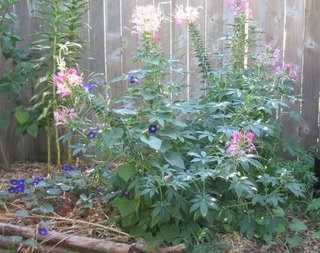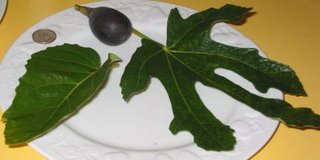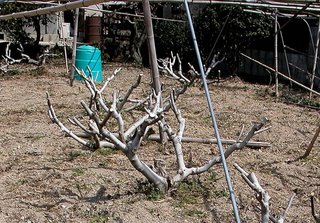
Jonagold. Last year this tree had fire blight and was "appleless". This is the first year to produce some fruit. Almost ripe.

Liberty. This tree was free of blight last year. The apples were bland. Will try eating them sooner this year, maybe there will be more flavor.

North pole. Also bland last year. Does anyone know when to pick the apples?
Today I pruned the sole non-fruiting apple tree (a golden delicious). This tree had a severe case of blight last year, and survived but no flowers this Spring.
Summer pruning keeps the trees compact. There are various methods. In some methods, the branches are cut back to a couple of nodes (
Lorette pruning) in mid and late summer (more than one pruning). Since these trees are still young and small, I did not trim back so severely. I did cut back about 3/4 of new growth on the golden delicious. About one month ago, I similarly pruned several dwarf Cherry Trees.
Here is a good article about
maintaining a backyard orchard. The key features are:
1. Plant a diversity of fruit trees for a succession of fruit over many months.
2. Choose dwarf varieties.
3. Plant them close together.
4. Keep them pruned to control size and optimize production on the small tree.
5. Don't be intimidated by pruning. Some shapes, such as espalier, can further increase the amount of fruit in a small space.
I would also add,
1. Also grow small fruiting plants (such as strawberries) and fruiting shrubs (such as blueberries and raspberries) which can be very productive in a small space. Fruiting vines, such a grapes, can produce in areas (such as an arbor on the side of a house or over a deck, that might otherwise not allow for plant growth.
2. Try container methods, which expand the climate limits by allowing for storage of dormant plants indoors, and which can be moved to different locations depending on yard needs and plant size.
3. Mix in other plants to improve pest control. I think that some herbs, such as chamomile, mints, chives, garlic chives, lavender, and others, attract small insects that help control pests.
4. Changing to a minimalis attitude about the lawn can reduce the nitrogen and water used in the garden. Decreasing nitrogen use can improve fruit production (by decreasing rampant growth favoring leaves over fruit). Im not sure about the effects of decreasing watering on fruit production, but at least one reference startes that an overwatered lawn also reducesfruit production.

























